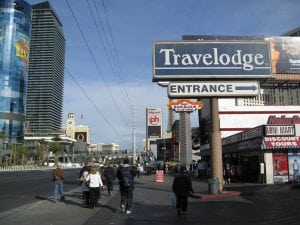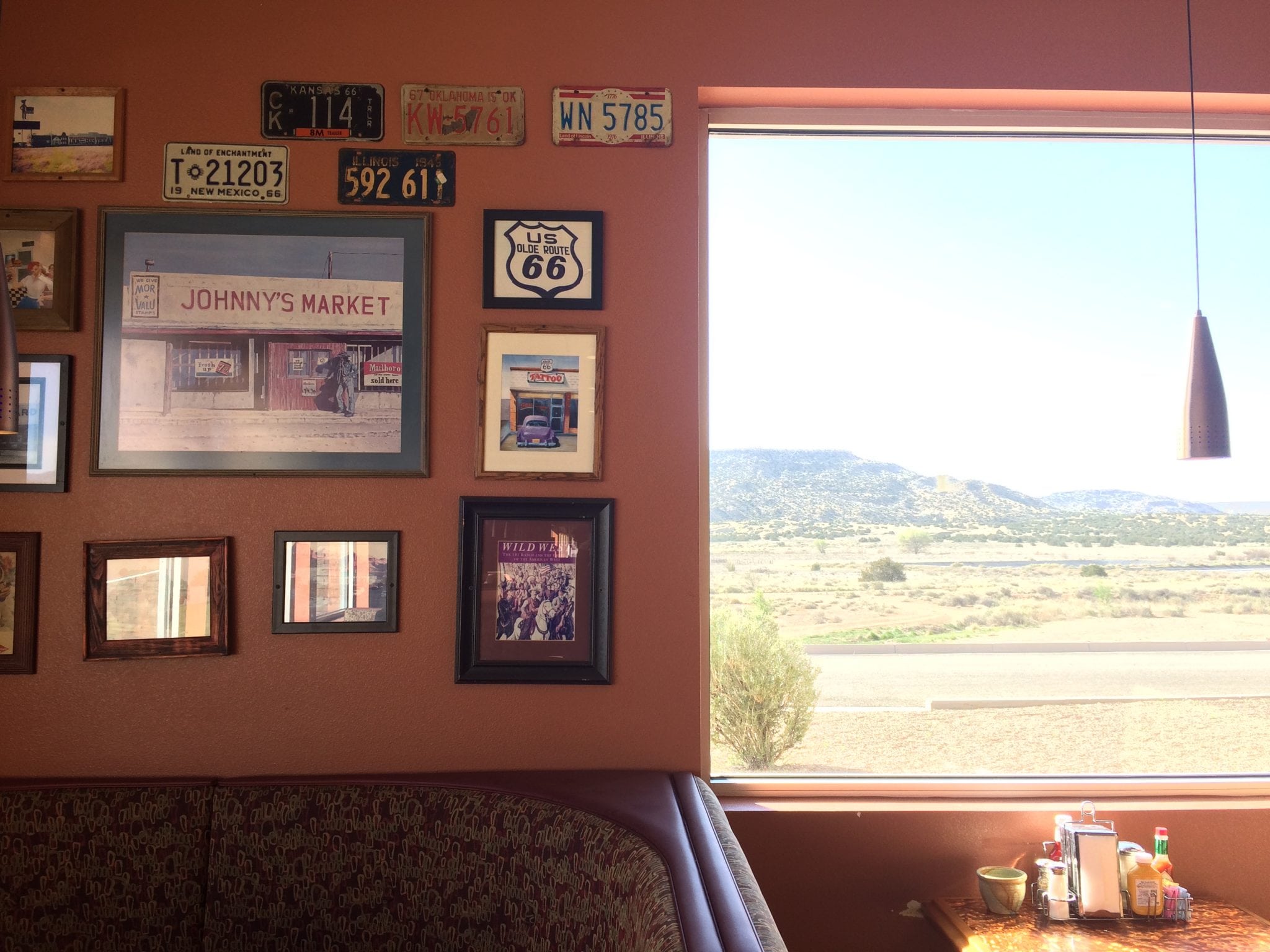Skift Take
While most American road trips are DIY, created piecemeal on a budget, the luxury set has options and smart travel brands know who to target.
 The Future of American Road Trips is a three-part deep dive examining why vacationers hit the road, where they spend their money, and how travel brands evolve alongside the vehicles that make road trips possible. Check out part one, part two, and part three.
The Future of American Road Trips is a three-part deep dive examining why vacationers hit the road, where they spend their money, and how travel brands evolve alongside the vehicles that make road trips possible. Check out part one, part two, and part three.
Personalization is key in travel, fostering loyalty in unique ways. But most road trips aren’t being sold by a company — American road trips have long been DIY.
For so many American travelers, road trip personalization is easily done at little cost. Seventy-six percent of domestic trips in 2016 relied on the traveler’s own vehicle as the primary mode of transportation, according to the U.S. Travel Association’s 2017 Domestic Travel Market Report. Then drivers can hook up Pandora, bring Hulu on a tablet, log into Netflix on the hotel room’s Roku, rely on Waze for intel, and get Yelp reviews anywhere imaginable.
But companies are increasingly finding innovative ways to accomodate road trippers at both ends of the economic spectrum.
Mid-range travelers, who can upgrade from DIY but can’t afford luxury, can turn to a tour operator like Auto Tours USA. Many options hover around $1,500–$3,000 per person, but unlike a more exclusive experience, these trips can be recreated without the middle man, if the traveler is willing to do the research and comparison shopping. Longstanding operator Trafalgar offers a Route 66 tour for just a slightly higher price.
International visitors are different altogether. They’re likely not shipping their cars to the states, and may be unfamiliar with the territory, so a tour operator can help shape the experience and make it feel accessible.
With a tour operator, the more a traveler spends, the more possible and complex personalization becomes. This is what leads luxury tour operators like Black Tomato to offer an “ultimate wild west road trip” for over $12,000, excluding flights, plus another through the Florida Keys for just over $5,000. Think high-end vehicles, six-star hotels, private guides, helicopter tours, and champagne toasts.
Luxury Road Trips Lure International Tourists
Luxury road trippers expect high levels of personalization, according to Sam Highley of All Roads North. Plus, nostalgia is especially influential among Highley’s international clients.
“There’s just this amazing heritage and folklore, from Lewis and Clark, Steinbeck, Kerouac, all these great migrations of people throughout the country, the history of Route 66,” said Highley. “That still draws a lot of people, certainly international travelers.”
More than half of the All Roads North clientele is actually American, though this happened unexpectedly. Highley, originally from the UK, started out marketing exclusively to the international market and he said American clients just came along organically.
The company’s three biggest demographics are families, empty nesters, and Gen Xers without kids — millennials aren’t high-earning enough yet, as the average cost hovers around $20,000 per trip. Highley reported that demand is doubling each year for the four-year-old company.
“The wow factor — It’s no different for [coastal Americans] than it is for somebody in the UK who’s never set foot in North America before.” Highley noted that California road trips are crucial for attracting the international market, though Southern Utah and Northern Arizona remain top choices, and the company operates nationwide.
Even for those who can afford a private driver, 90 percent of the company’s clients opt to drive themselves for the fun of it. In Highley’s experience, Australian and American clients are more amenable to longer segments of driving, whereas European clients may put a cap at around four hours a day.
Black Tomato’s road trips also appeal to a mix of Americans and international visitors, according to owner and co-founder Tom Marchant. He similarly identified California, Utah, Colorado, and Arizona as some of the most popular locales. Clients also lean toward doing their own driving, one exception being RVs, which can be intimidating, and are most popular for national park circuits out West.
As far as motivations for road tripping, Marchant said, “There’s definitely a good bit of nostalgia driving people’s interest in it, but it’s also looking ahead and wanting to find new things.” He spoke about coastal Americans going to Kentucky, Tennessee, or Mississippi looking for a different side of America, but this need not be related to the contemporary political and cultural divide. It can just as easily be about enjoying the music in Nashville, for example.
One trend Marchant is watching involves purchasing a car on the other side of the country, flying out to get it, then driving it home on an epic cross-country adventure, which happens in Europe as well. For future road trip products, Marchant is interested in digging deeper into certain states rather than trying to clock more miles behind the wheel.
These high-end road trips do have their advantages, but are financially out of reach for many millennials, whose desire for the DIY road trip remains strong.
Millennial Budgets and Vacation Time Recover From the Recession
Approaching peak traveling age right now are millennials — those born between 1981 and 1996, according to Pew Research, which makes them between ages 22 and 37 in 2018. This demographic is the apple of every travel company’s eye as they grow in their careers, amass more disposable income, and double down on their well-documented desires for experiences rather than material goods.
Unfortunately, millennials aren’t making as much money as everyone hoped. The Great Recession — which hit in 2008 but whose scars remained for the last decade in many households — saw young adults taking pay cuts, losing benefits, losing jobs, battling long-term unemployment, incurring debt, defaulting on already crippling student loan payments, and eventually, taking jobs that were inferior to the ones they lost. Their baby boomer parents were sure their children would out-earn them and purchase the usual home and car, but these milestones seemed out of reach for many.
The silver lining is that by 2018, millennial careers and spending power have had time to recover, while the desire for Instagrammable experiences remains. For road trips, this means that if a millennial does buy a car, they might buy something cheap and use it for affordable weekend outings rather than saving up for a Lamborghini or vacationing in Europe.
Millennials cited lower vacation costs as their No. 1 reason for taking road trips, according to MMGY Global’s 2017–18 Portrait of American Travelers study. Although, baby boomers actually lead the popularity of road trips: With boomers, 42 percent of their vacations are road trips, compared to 36 percent with millennials. Boomers cited lower vacation costs as their No. 3 reason for taking road trips.
“Gas prices are climbing higher, but not stopping Americans from road tripping,” said Julie Hall, a spokesperson for AAA. The national gas price average has already hit $2.90 per gallon in 2018, the highest since 2014, up from $2.66 in April. But these prices still aren’t as bad as $3.70 in 2014.
Historically lower gas prices and a more stable economy have boosted the number of out-of-state trips according to the U.S. Travel Association’s 2017 Domestic Travel Market Report. Nearly a quarter of all domestic trips were outside the traveler’s home region.
More good news — millennials’ vacation time is also recovering. According to Project: Time Off, an initiative of the U.S. Travel Association, American vacation usage rapidly declined starting in 2000, but with full-year data from 2017, we’re now seeing modest but steady improvement.
The State of American Vacation 2018 report noted that average vacation use climbed to 17.2 days per employee in 2017, compared to 16.8 days the year before, which marks the third straight year of increase. To be fair, the long-term average from 1976 to 2000 was 20.3 days, so in that sense, numbers are still down. But that doesn’t make road trips undesirable or impossible; it just shortens them.
Budget Hotel Chains Try to Stand Out
Wyndham is out in front reflecting the rising desire for affordable road trips. Its Super 8 brand even brought a new product to the 2018 New York International Auto Show: a car designed specially for road trips called the ROADM8, built from a 2017 Jeep Wrangler.
This neon yellow-and-red eyesore is hideous at best, and it sticks incurably in the mind’s eye, which might actually combat the fact that many road trippers have a hard time distinguishing one budget roadside hotel chain from another. The vehicle was inspired by Super 8’s new guest rooms, which were just redesigned to the tune of $100 million, and the vehicle’s perks include a coffee maker, mini-fridge, touchscreen entertainment, Wi-Fi, USB charging, and a roof rack.
This came on the heels of Super 8’s multimillion dollar ad campaign during the summer of 2017 called See You on the Road, poking fun at classic road trip fails and highlighting the new rooms. These rooms feel like an update from the dingy budget motel of decades past, and the ad targets families, friends, and solo travelers alike by tapping into some road trip nostalgia.
These ads will make a reappearance this year according to Mike Mueller, senior vice president at Super 8. Mueller also said that the hyper-local photography featured in the redesigned rooms is a big part of what distinguishes Super 8 from its competitors, which frankly all blend together for many travelers who aren’t brand-loyal.
“Our competitors have very nice rooms, but they’re a bit vanilla and unremarkable,” said Mueller.
Unlike a boutique hotel, Mueller recognizes that a Super 8 is not the main event, but rather a means to an end, the end frequently being a national park like the Grand Canyon. “While we’re not gonna be their ultimate destination, we’re going to facilitate all their bucket list travel,” said Mueller.
Super 8’s ubiquity along highway exit ramps also helps with brand recognition. In addition, over 75 percent of customers drive their own cars, as opposed to rented or shared cars, to a Super 8 location, according to Mueller.
Wyndham’s Travelodge brand made its own gesture to road trippers. The brand did a partnership in the fall of 2017 with the National Parks Conservation Association to promote visitation as well as conservation-related advocacy, highlighting their properties near famous parks like Yellowstone, Everglades, and Redwood. Nearly 50 percent of Travelodge’s properties are located adjacent to a national park and about 70 percent of Travelodge customers arrive by car.

A Travelodge in Las Vegas on January 16, 2010. The brand caters especially to road trippers in the western U.S. Photo by Chris Yunker, Flickr.
For summer 2018, Travelodge is planning a new campaign involving road trip nostalgia. “It’s going back to the old days of climbing into the wagon with your parents and doing I spy and the license plate game,” said John Henderson, vice president at Travelodge. He also indicated potential for intergenerational messaging, as older travelers share their road trip traditions with younger family members.
Henderson said that loyalty can help a brand like Travelodge stand out among other road trip-friendly hotels. “You may not necessarily be loyal to the Travelodge brand, but with the family of brands we have under Wyndham, there’s definite advantages to being associated with that loyalty program.”
G6 Hospitality’s Motel 6 brand ran their own ad in 2017 focused on the joy of road trips, as well as the brand’s updated guest rooms.
Unfortunately, Motel 6 also faces a discrimination lawsuit that could deter Latino visitors. Washington Attorney General Bob Ferguson accused Motel 6 of giving information on 9,000 guests with “Latino-sounding names” to U.S. Immigration and Customs Enforcement. This, combined with President Trump’s desire to build a border wall between the U.S. and Mexico, and his racist rhetoric targeting Latinos, puts this demographic at a severe disadvantage for domestic travel.
Motel 6 was unavailable for comment.
“Had I known any of this, I surely would not have patronized them,” said Roldán, a four-time cross-country road tripper of Ecuadorian-Guatemalan descent. She was familiar with the brand as a budget option.
Greg Mand, a 49-year-old sales and business development professional based near San Francisco, tended to stay in a Motel 6 or Hampton Inn on road trips, but said he might rethink that first preference with the advent of this lawsuit.
Brand loyalty may be especially important for marginalized groups that seek reliability and familiarity as a form of safety, according to Allyson Hobbs, associate professor of American history and director of African and African American studies at Stanford University. “This is anecdotal, but I think that some African Americans tend to be very brand-loyal,” said Hobbs. “My parents are really loyal to Marriott.”
Frequent road tripper Eric is partial to Wyndham’s Microtel brand. The 56-year-old media technology entrepreneur lives near Houston but spent many years on the coasts, and in 2018 alone, he has four road trips coming up, each exceeding 2,000 miles. His road trips frequently combine business with pleasure.
“I’ve never had a bad experience at the Microtels. They’re half the price, but not quite as comfortable,” said Eric. About Super 8’s redesigned rooms, he said, “I know they’ve got the new ones that are improved a bit, but I’m not a fan of them. Going lower-end where you can really be at $50–60 a night, not $100–120, Microtel I would put toward the top of the list.”

The first Super 8 in Aberdeen, South Dakota. The brand was created in 1973 and has long been synonymous with road trippers. Photo by Wyndham.
“I’m old enough to remember the early days of [Super 8], which followed right on the heels of Motel 6, basically towels that were about as thin as a bedsheet. I guess the new ones are enclosed; it’s not where your door is open to the outside.”
“There are days when you’ve got to do a lot of driving and you don’t have it in you for a surprise, so you do something generic like aim for the Holiday Inn Express because you know exactly what you’re gonna get,” said Eric. On reliability, one of his pain points is breakfast, for example having to choose between an unappealing free breakfast at a hotel or an equally unappealing McDonald’s drive-thru.
Despite his brand preferences, Eric is flexible enough to use apps like HotelTonight to save money. “I would love to see something where instead of booking online, you get a code that’s good for 15 minutes and you show up and just pay at the desk,” said Eric. “I don’t know why these hotels are paying the online aggregators.” Eric is also flexible enough to check out alternative accommodations where available.
Alternative accommodations are somewhat influencing the habits of road trippers. During 2017, 46 percent of respondents to a Turnkey survey traveled by car to their vacation destination, while 37 percent traveled by plane, and those who traveled by car were more likely to prefer vacation rentals than those who traveled by plane.
In general, not just including road trips, vacations that included sharing economy accommodations lasted twice as long as trips with other paid accommodations, according to the U.S. Travel Association’s 2017 Domestic Travel Market Report. Trips with sharing economy accommodations averaged 7.4 nights compared to 4.5 nights in private homes and 3.7 nights in paid accommodations (hotel, motel, or bed-and-breakfast). Fifty-five percent of overnight trips relied on paid accommodations while 35 percent of trips included stays in private homes and 3 percent relied on the sharing economy.
Homesharing may be more popular than carsharing (distinct from ridesharing), but the way road trippers use vehicles is changing rapidly all the same.
Stay tuned for part three of The Future of American Road Trips, in which we look at the reality of electric vehicles and the promise of self-driving cars.
The Daily Newsletter
Our daily coverage of the global travel industry. Written by editors and analysts from across Skift’s brands.
Have a confidential tip for Skift? Get in touch
Tags: black tomato, budget, luxury, millennials, motel 6, super 8, travelodge
Photo credit: A diner along Route 66 just outside Albuquerque, New Mexico, in April 2017. Roadside hotel chains often target road trippers through nostalgic marketing campaigns. Sarah Enelow / Skift
